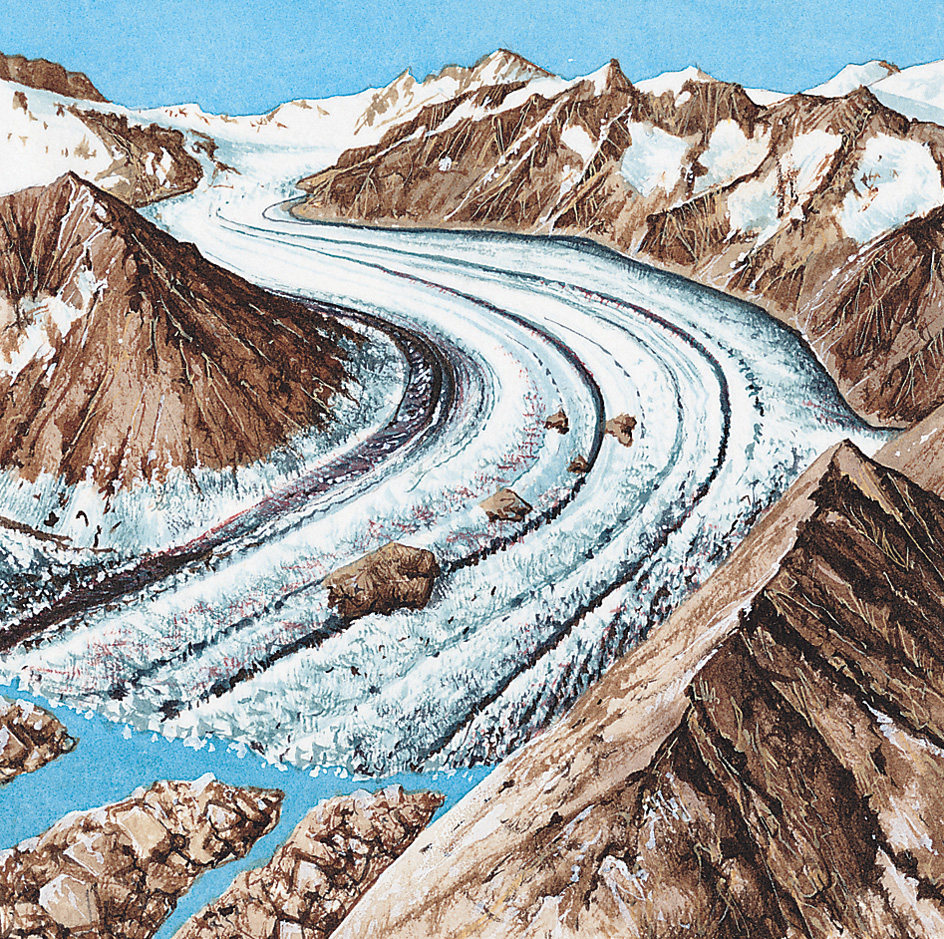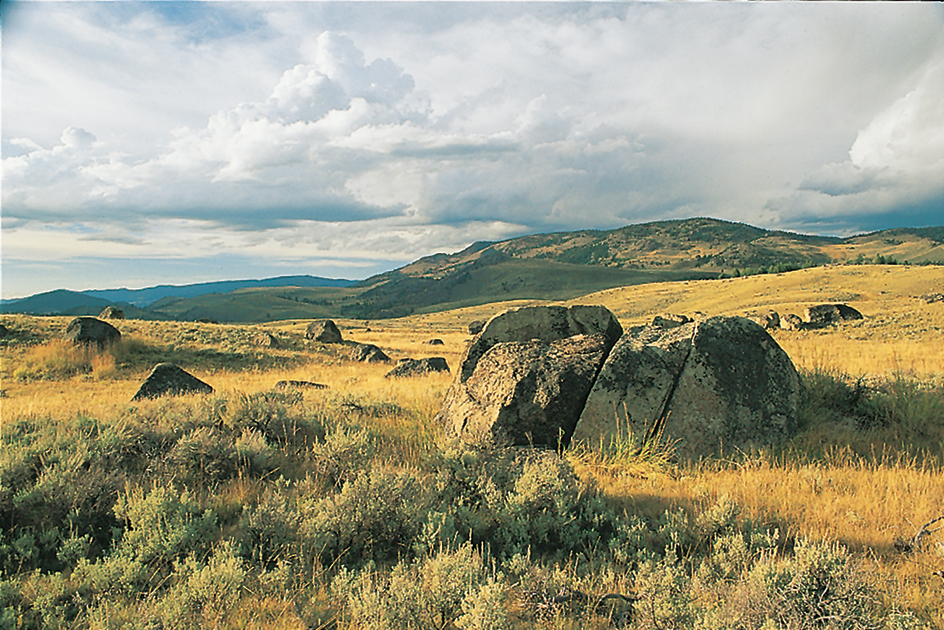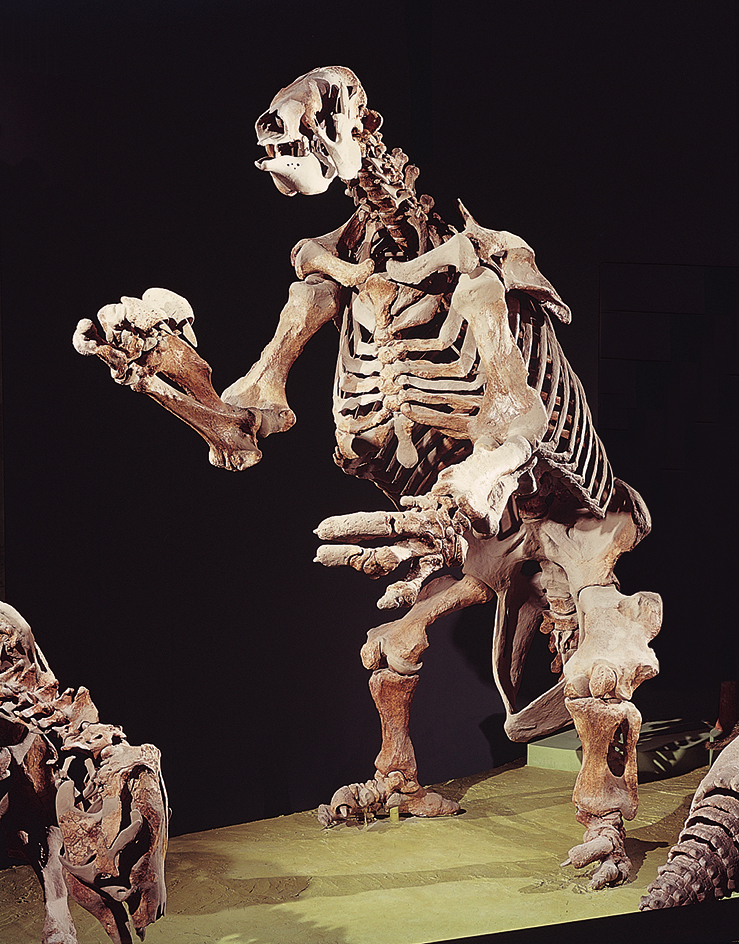Pleistocene Epoch << PLYS tuh seen EHP uhk >> was a time in Earth’s history that began 2.6 million years ago and ended 11,700 years ago. The Pleistocene was a glacial epoch, a cooling period marked by the gradual growth of glaciers. In a glacial epoch, glaciers spread and thicken during cooler periods called glacial advances or ice ages. Glaciers thin and retreat during warmer interglacial periods. People often refer to the Pleistocene as the Ice Age, but several glacial advances occurred during the period, and it was not the only glacial epoch in Earth’s history.

During the Pleistocene, huge glaciers called ice sheets covered large portions of the northern continents. Sea floor rocks from the epoch preserve evidence of as many as 20 or more glacial advances. This evidence includes debris dropped by floating ice and fossils of microbes that lived in cold waters. Rocks on land show clear evidence of only a few glacial advances. Geologists believe this is because later glaciers mixed up or destroyed signs of earlier glacial advances.

Early human beings evolved (developed) in Africa during the Pleistocene Epoch. By about a million years ago, these people had spread across much of southern Asia. Between 200,000 and 100,000 years ago, physically modern human beings, members of our own species, appeared and began to migrate into Europe and Asia. The most recent glacial advance lowered sea levels, exposing a strip of land called a land bridge between what are now Siberia and Alaska. Most anthropologists believe that the first human beings to populate the Americas, the ancestors of Native Americans, migrated from Asia across this land bridge.
Many large land mammals lived during the Pleistocene Epoch. These include mammoths, giant ground sloths, and saber-toothed cats. Some scientists suspect that hunting or environmental changes caused by human activities may have contributed to the extinction of many large mammals near the epoch’s end.

The Pleistocene was the first epoch of the current period, the Quaternary Period. Scholars consider the most recent retreat of the northern ice sheets to mark the end of the Pleistocene and the beginning of the current time, the Holocene Epoch. However, no strong evidence indicates that the series of glacial advances that began during the Pleistocene has actually ended. The current epoch may simply be a temporary interglacial period.
